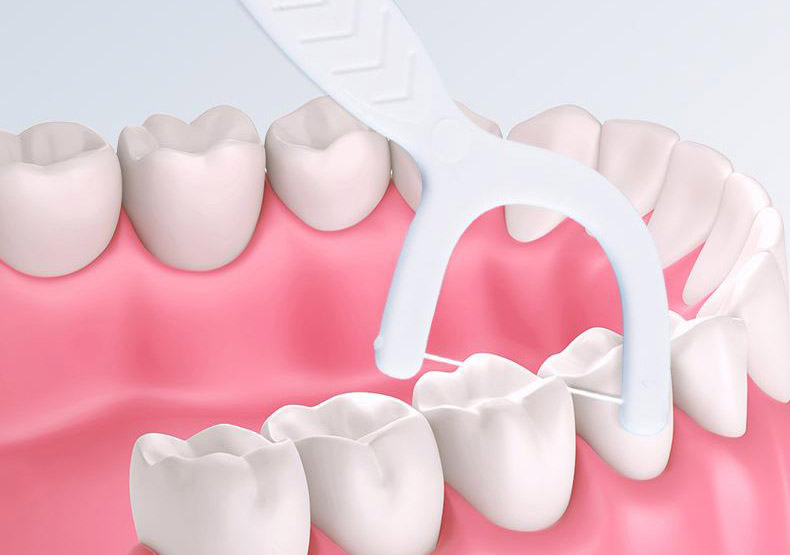Types of Dental Floss: Choosing the Right One for Your Needs
In the past, people used to clean their mouths with a toothbrush. We were taught from childhood to brush twice daily—morning and night—to maintain oral health. However, toothbrushes have large tip, so there have areas that cannot be cleaned. This is where flossing comes in. Cause its slender structure, dental floss can easily reach the smallest corners of the mouth. It complements the toothbrush in cleaning those hard-to-reach places.
So let’s explore the types of dental floss, how to use it and the misconceptions about dental floss in this article.
1. What is Dental Floss?
Dental floss is a thin thread made of nylon, Teflon, polyester, or other materials. It is mainly used to clean teeth. Flossing prevents oral diseases by removing plaque from neighboring surfaces, or removing food debris from between teeth.
2. Types of Dental Floss
There are many types of dental floss available on the market today. Let’s take a deeper learn at the classification of dental floss, and take notes if you need them.
2.1. Categorized by material
Nylon Floss
Nylon is one of the most common dental floss materials. Nylon floss is affordable and perfect for everyday use. It has good flexibility and abrasion resistance, and can easily pass between teeth to effectively remove food debris and plaque. The surface of nylon dental floss is usually smooth, which makes it less likely to damage gums. However, some of the lower quality nylon floss may be hairy and break during use. Therefore, when choosing nylon dental floss, it is important to select a reliable brand. These brands of nylon dental floss, after a special process, the body of the thread is tough, not easy to break, can provide a stable guarantee for oral cleaning.
Teflon Floss
Polytetrafluoroethylene is often referred to as Teflon, and this type of dental floss is quick and easy to use. Teflon floss is flexible and can easily fit into tight spaces. It is also characterized by its smoothness, which is about 2 times higher than polyester floss and 10 times higher than nylon floss. Therefore it is very easy to move. It is more suitable for people with sensitive gums.
Polyester Floss
Polyester dental floss is made of a relatively hard material, so it provides more friction when cleaning between teeth. It is more effective in cleaning stubborn tartar and plaque. Polyester floss is also more resistant to stretching and is less likely to be pulled off during use. However, due to its hard texture, it can cause some irritation to the gums if not used properly. People with sensitive gums need to be extra careful when using polyester floss, gently sliding the floss into the crevices of their teeth, avoiding excessive force, or choosing Teflon dental floss.
Waxed dental floss or non-waxed floss
Waxed Dental Floss: The floss material is coated with a layer of wax, which makes it smoother and easier to get into tight spaces between teeth. Waxed dental floss is a good choice for people with small teeth gaps. It also reduces discomfort due to friction during cleaning. However, if the floss is the poor quality and the wax coating is uneven, some wax flakes may remain in the gaps. This is not common and can be avoided by choosing a product of acceptable quality.
Non-waxed floss: floss without wax coating is relatively more environmentally friendly. It has higher friction and better cleaning effect. It is especially suitable for people who have large teeth gaps and are prone to food residue. Although non-waxed floss may not be as smooth as waxed floss when it enters the gaps between teeth, it can still be effective in cleaning the teeth through proper use.
2.2. Categorized by form
Dental Floss Sticks
Dental floss sticks are one of the most common forms of floss. They hold the floss in a compact handle, making it easier and more convenient to use without having to wrap the floss around your fingers. Dental floss sticks are suitable for beginners, children and people with poor manual dexterity. There are a variety of floss sticks on the market, some with ergonomically designed handles for a comfortable grip. The tail of the dental floss stick is sharp, just like a toothpick, it can remove large pieces of food residues between teeth. Dental floss sticks are usually single-use and should not be reused.
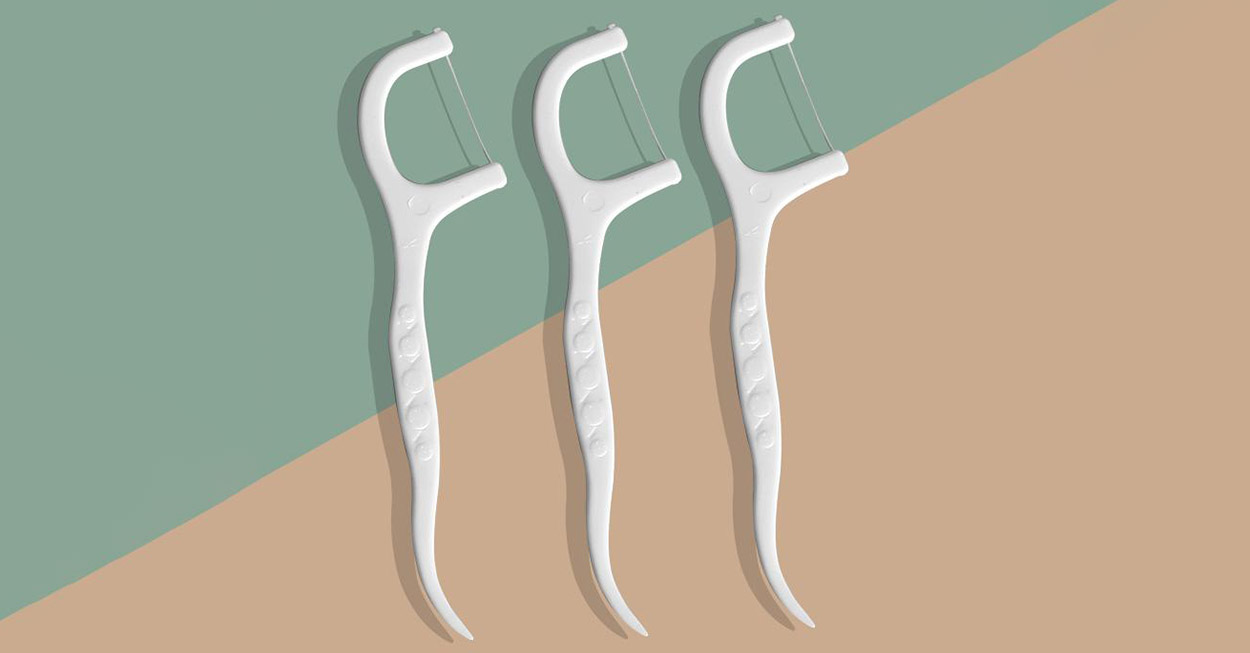
Spool Dental Floss
Spool dental floss is a long piece of floss wrapped around a spool and cut to the appropriate length for use. The advantage of this type of dental floss is cost-effective and suitable for multiple users in a family. Since you can cut the length as needed, it is flexible for people with large or small gaps between their teeth. However, the use of spool dental floss is a bit more complicated and requires wrapping the floss around your finger, which may take some practice for novices to master.
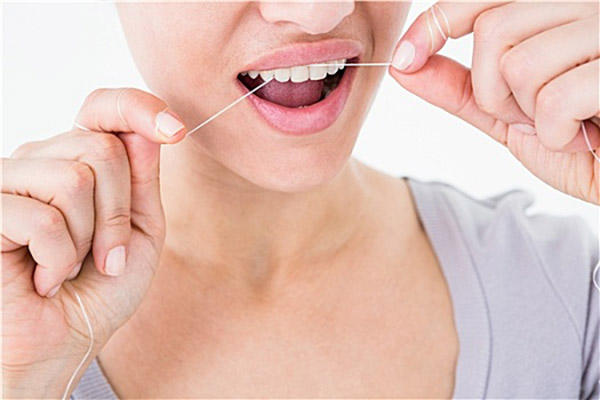
2.3. Classification by floss cross-section
Flat Floss
The cross-section of this type of dental floss thread is flat sheet. It covers a larger area when it enters a tooth gap, especially for larger gaps, and is more effective at removing food debris and plaque. However, it may not slide easily into very tight spaces, and you will need more skill and patience when using flat dental floss.
Round Floss
Round dental floss can easily slide into the teeth gaps due to its round cross-section and is especially effective for close tooth alignment.It slides better and reduces irritation of the gums. However, if you have large gaps between your teeth, round dental floss may not cover enough area to clean as well as flat floss.
2.4. Other types of dental floss
Dental Floss with flavor enhancers
These types of dental floss has food additives added to the floss, and has a fruity flavor. Usually used by children, flavored dental floss reduces their repulsion. It attracts them to flossing as if they were eating candy. When choosing dental floss for children, it is important to select a product that meets the characteristics of children’s mouths. Choose soft, flexible floss to fit children’s smaller tooth spaces and delicate gums. Parents should teach their children the proper way to floss so that they do not accidentally injure their mouths when flossing on their own.
Dental Floss for the Elderly
Elderly people need the dental floss more gently and easily because their teeth and gums may be receding and loosening to varying degrees. The floss material will be softer and less irritating to the gums. Teflon waxed dental floss sticks are recommended, as they are flexible and easy to handle, making them ideal for seniors to clean their mouths.
Expanded Floss
This type of dental floss is designed for people with wide teeth gaps. It expands 3 to 4 times in size when exposed to saliva and fits tightly into wide gaps to better clean plaque and food debris from the teeth.
3. How to Use Dental Floss
We’ve talked about the various types of dental floss, so how do we use them once we’ve purchased them? Don’t worry, let’s continue our discussion on how to use dental floss.
3.1. How to use a dental floss stick
Rub the floss into a gap up to the gums, but don’t push too hard. Rub up and down slowly, like a violin. The dental floss should be in a “C” shape with the surface of the teeth to make the cleaning surface bigger.
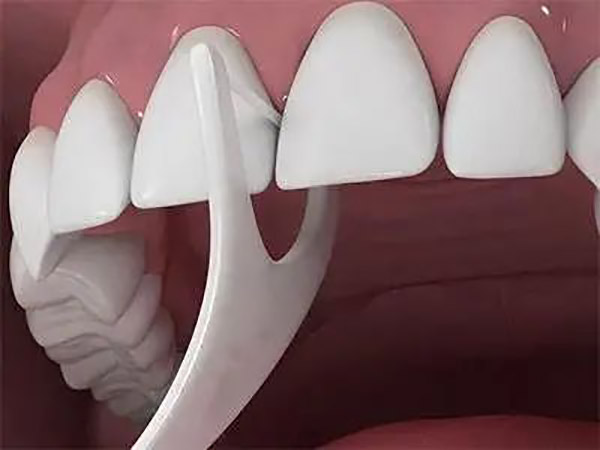
3.2. How to use spooled dental floss
Pull the dental floss from the floss box, take a section of floss about 30cm, roll part of the floss on the middle finger of both hands to play a fixed role, and then leave about 10cm operating distance. Control the dental floss with the thumb and forefinger of both hands, bring the floss into the teeth gap, and slide along the teeth into the gap where the teeth and gums meet, until it meets natural resistance. Then hold the floss taut against the tooth and scrape all sides of the tooth in an up-and-down motion.
When practicing the dental floss at first, start with the incisors and work your way back to the back teeth until you reach the last side of the last tooth. Start with the front teeth, which are the easiest to floss, and then slowly move to the back teeth as you familiarize yourself with flossing.
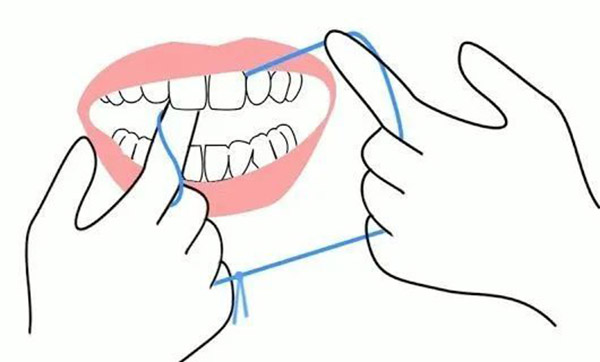
4. Tips for Dental Floss
| Category | Description |
|---|---|
| Frequency | Flossing should be done once a day, especially after dinner. |
| Who Needs Dental Floss | If possible (especially for young and middle-aged people), flossing should be used to the maximum extent possible, as it is beneficial to long-term oral health and avoids dental caries. |
| Choice of Floss | The choice of dental floss is a matter of personal preference. In fact, as long as it is used properly, any type of dental floss can effectively remove plaque and tartar. |
Note: Do not use too much force when flossing to avoid damaging the gums. Use different sections of dental floss to enter different crevices, and always remove plaque from neighboring surfaces with clean floss.
5. FAQs
1. Is dental floss with fluoride more effective in cleaning?
Floss with fluoride can prevent demineralization of tooth enamel and has some caries preventive effect. It is similar to other types of dental floss in terms of cleaning.
2. Does the material of the dental floss affect its cleaning ability?
Basically no, it is like using a broom of a different material to sweep the floor. The material of the floss has a very limited effect on its cleaning ability, but rather it is a matter of technique. If you are good at flossing, then it will clean the crevices of your teeth better.
3. If I brush my teeth after a meal, can I stop flossing?
Brushing is not effective in cleaning the crevices of the teeth, and flossing can be a supplemental cleaning. If you are able to do so, it is best to floss your teeth after meals. If you don’t have time after meals, you can use dental floss at night before going to bed.
4. Will flossing for a long period of time widen the gap between my teeth?
No, it won’t. Our teeth are dynamic on the gums and have a certain amount of space to move. This space is much larger than dental floss, so flossing for a long period of time will not widen the gap. The flossing we see will displace the teeth a little bit, a little gap, this is only temporary, and will soon be back to normal. If you use a toothpick for a long period of time, it will cause your gums to recede faster, which does make the gap wider.
5. Can children use dental floss?
Yes. However, it is best for children to floss with the assistance of an adult to avoid accidental injury to the mouth.
6. Conclusion
There are many types of dental floss, and there is not much difference in the cleaning ability of different floss materials. Different types of floss are suitable for people with different needs to ensure that they can clean their teeth without harming their mouths at the same time. Choose the right type of dental floss according to the actual condition of your teeth. Use it consistently to maintain a hygienic and healthy mouth.

